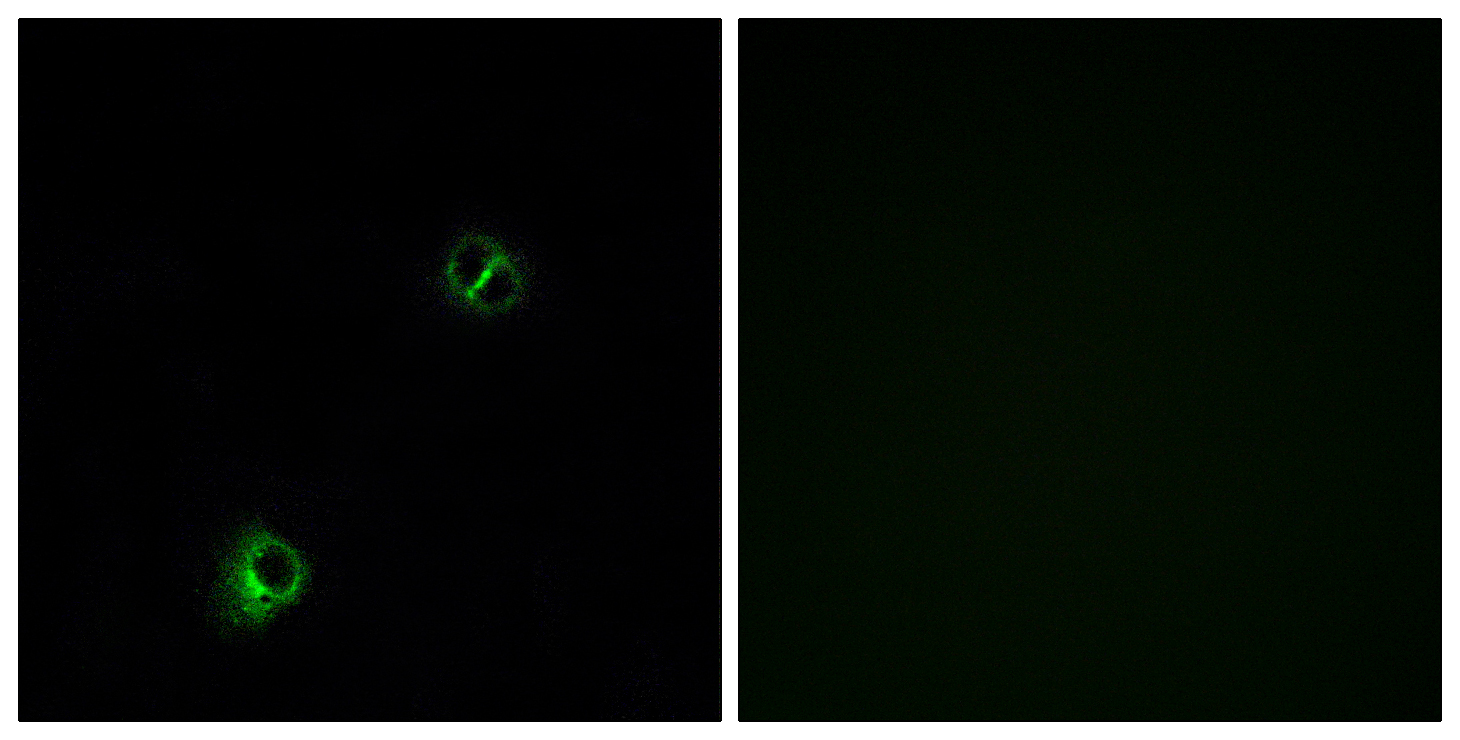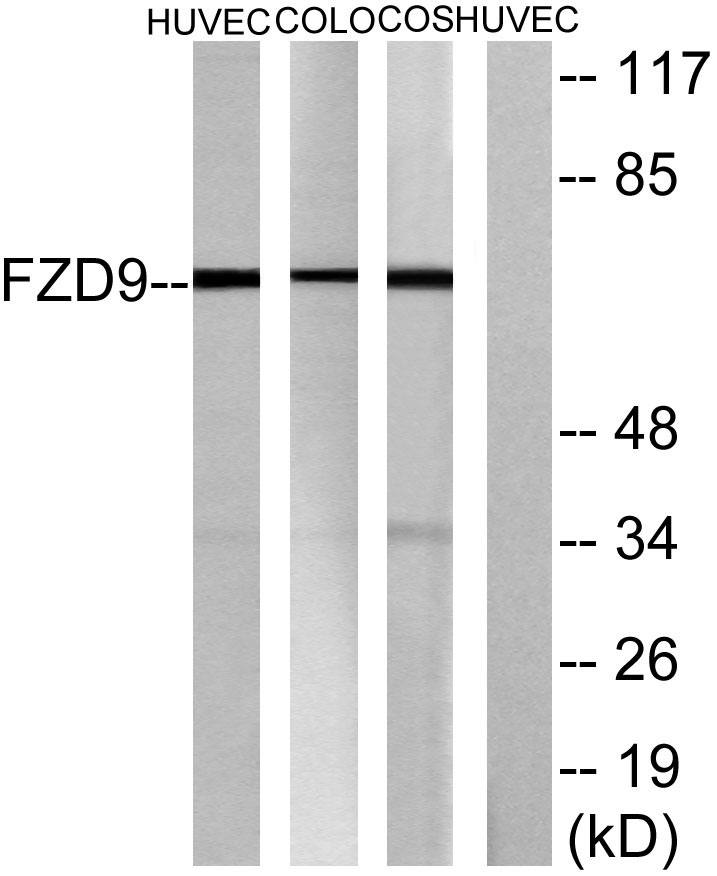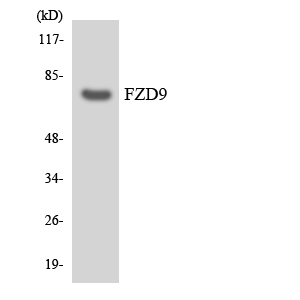产品名称
Frizzled-9 Rabbit Polyclonal Antibody
别名
FZD9; FZD3; Frizzled-9; Fz-9; hFz9; FzE6; CD antigen CD349
存储缓冲液
Liquid in PBS containing 50% glycerol, 0.5% BSA and 0.02% New type preservative N.
Human Gene Link
http://www.ncbi.nlm.nih.gov/sites/entrez?db=gene&term=8326
Human Swissprot No.
O00144
Human Swissprot Link
http://www.uniprot.org/uniprotkb/O00144/entry
Mouse Gene Link
http://www.ncbi.nlm.nih.gov/sites/entrez?db=gene&term=14371
Mouse Swissprot No.
Q9R216
Mouse Swissprot Link
http://www.uniprot.org/uniprot/Q9R216
免疫原
The antiserum was produced against synthesized peptide derived from human FZD9. AA range:542-591
特异性
Frizzled-9 Polyclonal Antibody detects endogenous levels of Frizzled-9 protein.
稀释度
WB 1:500 - 1:2000. IF 1:200 - 1:1000. ELISA: 1:20000. Not yet tested in other applications.
宿主
Polyclonal, Rabbit,IgG
背景介绍
frizzled class receptor 9(FZD9) Homo sapiens Members of the 'frizzled' gene family encode 7-transmembrane domain proteins that are receptors for Wnt signaling proteins. The FZD9 gene is located within the Williams syndrome common deletion region of chromosome 7, and heterozygous deletion of the FZD9 gene may contribute to the Williams syndrome phenotype. FZD9 is expressed predominantly in brain, testis, eye, skeletal muscle, and kidney. [provided by RefSeq, Jul 2008],
组织表达
Expressed predominantly in adult and fetal brain, testis, eye, skeletal muscle and kidney. Moderately expressed in pancreas, thyroid, adrenal cortex, small intestine and stomach. Detected in fetal liver and kidney. Expressed in neural progenitor cells (PubMed:27509850).
细胞定位
Cell membrane ; Multi-pass membrane protein . Relocalizes DVL1 to the cell membrane leading to phosphorylation of DVL1 and AXIN1 relocalization to the cell membrane. .
信号通路
WNT;WNT-T CELLMelanogenesis;Pathways in cancer;Colorectal cancer;Basal cell carcinoma;
功能
caution:Has been first described as FZD3 in litterature.,domain:Lys-Thr-X-X-X-Trp motif is involved in the activation of the Wnt/beta-catenin signaling pathway.,domain:The FZ domain is involved in binding with Wnt ligands.,function:Receptor for Wnt proteins. Most of frizzled receptors are coupled to the beta-catenin canonical signaling pathway, which leads to the activation of disheveled proteins, inhibition of GSK-3 kinase, nuclear accumulation of beta-catenin and activation of Wnt target genes. A second signaling pathway involving PKC and calcium fluxes has been seen for some family members, but it is not yet clear if it represents a distinct pathway or if it can be integrated in the canonical pathway, as PKC seems to be required for Wnt-mediated inactivation of GSK-3 kinase. Both pathways seem to involve interactions with G-proteins. May be involved in transduction and intercellular transmission of polarity information during tissue morphogenesis and/or in differentiated tissues.,similarity:Belongs to the G-protein coupled receptor Fz/Smo family.,similarity:Contains 1 FZ (frizzled) domain.,tissue specificity:Expressed predominantly in adult and fetal brain, testis, eye, skeletal muscle and kidney. Moderately expressed in pancreas, thyroid, adrenal cortex, small intestine and stomach. Detected in fetal liver and kidney.,
纯化
The antibody was affinity-purified from rabbit antiserum by affinity-chromatography using epitope-specific immunogen.




